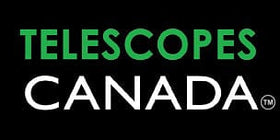Are you thinking of buying a telescope? If so, it's important to consider the many factors that will impact your telescope-buying experience. From the type of telescope you need to the features and accessories you should look for, there are many different aspects to consider when purchasing a telescope. To help you make an informed decision, this blog post will outline some important factors to consider before you buy telescope.
1) Determine the Type of Viewing You Want to Do
The type of telescope you purchase depends on what type of viewing you want to do. If you are just getting into astronomy and don't have any specific preferences, then a refractor telescope is often a great choice. These telescopes use lenses to gather light and provide great views of the planets and stars.
2) Consider the Location You'll Be Viewing From
Before you buy telescope, the location you'll be viewing from is an important factor to consider. Different types of telescopes will perform better in different locations. For instance, refractor telescopes perform best in areas with moderate light pollution, while Dobsonian or Newtonian telescopes may do better in areas with low light pollution. On the other hand, Maksutov-Cassegrain and Maksutov-Newtonian telescopes are great for observing from both urban and suburban settings.
3) Choose the Right Aperture Size
The size of the aperture is an important factor to consider before you buy telescope. The aperture is the diameter of the telescope’s primary lens or mirror and determines the amount of light that can be collected and the resulting image resolution. Generally, the larger the aperture, the better the image.
There are many different types of telescopes, such as refractor telescopes, Newtonian telescopes, Dobsonian telescopes, Maksutov Cassegrain telescopes, and Maksutov Newtonian telescopes. The aperture size for these different types of telescopes varies greatly.
4) Determine the Right Focal Length
When you are looking to buy telescope, you must consider the focal length. Focal length is the distance between the primary lens or mirror and the point of focus. The shorter the focal length, the wider the field of view, while a longer focal length provides a more powerful magnifying power.
5) Choose Between Refractor and Reflector Designs
When it comes to buying a telescope, one of the biggest decisions you will have to make is whether to go for a refractor or reflector design. Refractor telescopes, such as the classic Dobsonian telescope, use lenses to gather and focus light from distant objects, while reflector telescopes, such as the Maksutov Cassegrain Telescope or Maksutov Newtonian Telescope, use curved mirrors to collect and focus the light.
6) Don't Forget the Eyepieces!
Eyepieces are an integral part of your telescope and can make or break your viewing experience. Depending on the type of telescope you choose, the eyepieces will vary. For example, if you choose a Dobsonian telescope, you'll likely need larger eyepieces than a Maksutov Cassegrain Telescope. Similarly, a Maksutov Newtonian Telescope requires different eyepieces than a refractor telescope or a Newtonian Telescope.
Final Words
No matter what type of telescope you are looking for, it is important to do your research and consider all of the factors outlined in this post before making a purchase. With so many options available, it can be difficult to choose the right one for you. We hope that our tips have helped make the selection process easier for you!

